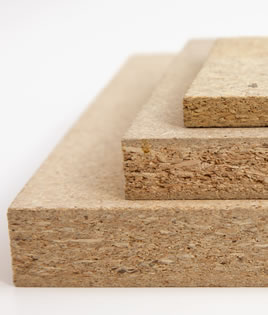Product description
Particle board, also known as “particleboard,” is a non-structural engineered wood panel made from the waste residues created during the manufacturing of other wood products. Particle board is cheaper, denser and more uniform than conventional wood and plywood. It is a good substitute when cost is more important than strength and appearance.

It is generally used for industrial applications as a raw material in the production of finished goods, such as ready-to-assemble furniture or cabinets. Particle board is either hidden from view in a finished product or covered with a decorative coating such as a wood veneer or resin-impregnated paper.
Technical information
Particle board is manufactured from small wood particles such as sawdust and shavings from the manufacturing of other products, glued together using a resin under heat and pressure. Particle board is usually bonded with a non-water-resistant glue, making the product unsuitable for exterior and high-humidity environments.
A significant disadvantage of particle board is its susceptibility to expansion and discoloration from moisture absorption, particularly when it is not stained, painted or has a sealer applied to it.
Particle board has a smooth surface that permits the efficient application of coatings. A smooth surface can be achieved through either a “multi-layer” composition (usually three or five layers) in which finer particles are deposited in the surface layers and coarser particles make up the core, or a “graduated” composition in which there is a continuous transition from the finest surface particles to the coarsest core particles.
Particle board is generally produced in thicknesses ranging from ¼ inch to 1½ inches. Larger panel sizes can be produced, but the panels are typically cut to 4x8 feet for retail purposes.